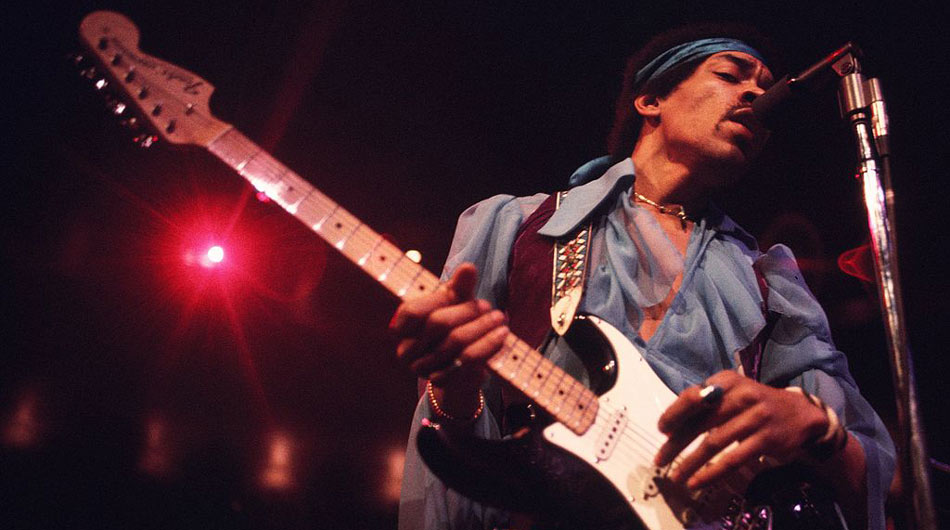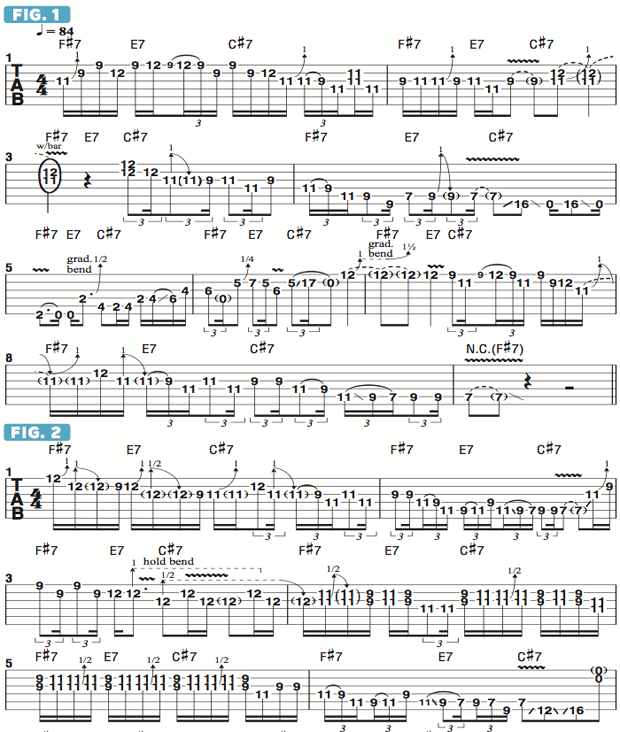Constructing Solo Phrases in the Style of Jimi Hendrix

All things that are truly great only become greater with the passing of time, an attribute that can certainly be applied to the incredible music of the legendary Jimi Hendrix.
The power, passion, individuality and influence of Jimi’s instantly recognizable style are more apparent now than ever and his legacy will continue to grow as the years pass.
This month, I’d like to explore the intricacies of Hendrix’s soloing style with specific attention on phrasing, melodic content and groove.
One of the earmarks of Jimi’s 1969/1970 Band of Gypsys period was a focus on fat, funky grooves, provided by one of the rock’s greatest rhythm sections—drummer Buddy Miles and bassist Billy Cox.
The line-up of Jimi, Buddy and Billy occurred in order to fulfill a contractual obligation for an album, and the three musicians subsequently recorded the truly revolutionary Band of Gypsys album live, on New Year’s Eve, December 31, 1969. Throughout each track, Miles and Cox lay down a rock-solid foundation while Hendrix soars above, delivering consistently iconic performances.
The album’s opening track, “Who Knows,” consists of a repetitive three-chord progression played over a churning groove. FIGURES 1 and 2 are played over a “Who Knows”-type feel, offered here in the key of C# and built from a chord progression starting on the four chord, F#7, moving to the flat-three, E7, then to the one, C#7. The majority of the soloing in these examples is based on the C# minor pentatonic scale (C# E F# G# B), with brief reference to C# major pentatonic (C# D# E# G# A#), via the inclusion of the major sixth, A#.
A key element to capturing the Hendrix vibe is to seamlessly shift between phrases built from even, or “straight,” 16th notes to phrases played with a triplet feel, either through the use of steady 16th-note triplets or leaning on the swing feel of an eighth- note/16th-note figure within a triplet bracket.
All the latest guitar news, interviews, lessons, reviews, deals and more, direct to your inbox!
Bars 1-4 of FIGURE 1 are played in ninth and seventh positions and rhythmically phrased with an emphasis on straight 16th notes, with 16th-note triplets adding rhythmic push to the line. Jimi’s crystal-clear sense of melody is emulated here; blazing speed and acrobatic technique are not part of the equation.
Bar 5 begins with a shift down to second position after which I work my way back up to ninth position. When playing these lines, strive above all else for rhythmic accuracy and clear note definition.
FIGURE 2 begins with the signature Hendrix technique of bending two strings at once under a single fretting finger: I start with a whole-step bend at the 12th fret on the high E string, and while this string is bent, I catch the B string under the fingertip so that it is pre-bent up a whole step, after which the bend is picked and released; this is then replicated on the B and G strings. Most of this example places the emphasis on a triplet feel, but at the end of bar 4 into bar 5, I switch to straight 16ths, offering contrast to the swinging feel of the bass and drums.


Guitar World Associate Editor Andy Aledort is recognized worldwide for his vast contributions to guitar instruction, via his many best-selling instructional DVDs, transcription books and online lessons. Andy is a regular contributor to Guitar World and Truefire, and has toured with Dickey Betts of the Allman Brothers, as well as participating in several Jimi Hendrix Tribute Tours.

